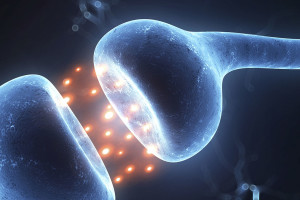I’m going to let you into a little secret about leptin levels that will probably make you very happy. You don’t have to eat clean and perfect 100% of the time. You can cheat a little and if you do it right, it will work in your favour! This is a unique technique applied to those in a calorie deficit and are trying keep encouraging the body to release fat for energy.
Re-feed days or carbohydrate cycling is probably the most powerful fat burning strategy on the whole planet. Nothing else even comes close to this technique for getting those last few pounds of fat off your six pack belly. For me it is the holy grail and the ONLY guaranteed way to outwit your body’s starvation response when calories and carbohydrates are already low.
The problem with continuous calorie deprivation
Your body doesn’t care about being lean, having lots of muscle and defined six pack abs, it just wants to survive. Your body sees fat as a stored energy source, a tank of fuel that’s ready in case of a sudden famine. In the days of our early ancestors, excess fat was useful during times of starvation and difficult winters, but in this day and age, excess fat isn’t necessary due to the constant overabundance of food. As you maintain a continuous calorie deficit in your efforts to get leaner, your body thinks its being starved of food and elicits a survival response in an attempt to keep you alive.
Recommended Content: Discover the best goal for you. Bulk or Cut.
Leptin Levels – Quite possibly the most important hormone you have never heard about
The body’s signal of starvation is the hormone leptin. Some people call it the “King of fat burning hormones”. Leptin is part of the cytokine family and is synthesized primarily by your adipose (fat) cells, and also a small amount from your muscles and brain.
Leptin’s main function is to help regulate your hunger, food intake and energy output. If your leptin levels fall, you start to get massive cravings for lots of wonderful foods full of fat and carbs. Sound familiar?
The rate leptin is released into your body is mostly controlled by the number of body fat cells and the size of those fat cells in your system. Basically, the more fat you have in your body, the more leptin is released by your fat cells into your system that sends a signal saying “Everything’s fine, we have plenty of fat left over.” For obese individuals, things continue as normal until the point where the body gets reasonably lean. As you diet down and reduce the fat in your system, your leptin levels start to dip and your body begins it’s survival response.
Recommended Reading: Hormones – Are yours helping or hurting you?
The survival response of a chronic calorie deprivation (Continuous daily dieting)
As leptin levels decrease in your system, the following responses are observed.
- Reduced metabolism (Rate of calorie expenditure)
- Decreased testosterone (Less morning wood for men)
- Decreased reproduction hormones and menstruation (in females)
- Less labido (Sex drive)
- Less energy throughout the day
- Irritability and stress
- Decreased growth hormone
- Increased cortisol (stress hormone)
- Lower immune function
An additional effect is your body’s depletion of glycogen. When you consume carbohydrates, they are broken down and used for energy. The surplus carbs are converted to glycogen for storage in your muscles, brain and liver, all readily available for use at a later time. As you restrict your intake of carbs and calories, this supply is depleted, you will notice your energy and training intensity begin to diminish from the lack of available glycogen energy. You will also notice that your muscles would “flatten out” and become softer due to the reduction in water that your glycogen is stored with.
Using a re-feed day to reset leptin levels
A Re-Feed day is a day where you increase your calories up to maintenance calories or slightly above by increasing your carbohydrate intake. This maintenance calorie level is different for everyone depending upon lots of different factors such as: height, weight, age, gender and daily activity levels.
The purpose of a re-feed day his is to help boost your metabolism and help restore your Leptin levels. It’s a way of telling your body, “we aren’t starving, everything’s fine, there is still plenty of food available.”
Leptin is highly responsive to glucose metabolism so when doing a refeed, you will benefit much more if the majority of your additional calories are coming from good sources of carbohydrates that will turn into glucose (potatoes, pasta, rice, bread, oats and grains). When done this way, leptin levels will show a significant rise over if you had eaten a surplus of calories coming from more protein, fat, or fructose.
Including a re-feed day into your cutting diet will be really beneficial and allow you to continue to burn body fat at an optimal rate. A re-feed is basically taking 1 step back, but 2 steps forward.
I recommend that you keep protein and fat intake the same as what they are on the other days of the program. When it comes to increasing carbs, any carbs of your choice are mostly fine, however I find eating surgery, simple carbs can trigger massive cravings and hunger that can cause refeed days to become all out binge weekends if you’re not careful. If you have trouble controlling your refeed days, consume mainly complex carbs, or keep the simple sugary carbs for the end of the day and after a workout if possible.
Recommended Reading: How to Track and Adjust your Diet along the way.

Does everyone need a re-feed day?
A re-feed day is only needed to be included in your diet if you are in a calorie deficit. The importance of including re-feeds in your diet is a factor of a few things such as:
- Your body fat % (the leaner you are, the more important)
- Your calorie deficit (the greater deficit you are in, the more important)
- The length of time dieting (the longer you have been dieting the more important)
- Your current carb intake (the lower, the more important)
- Exercise (type/amount/etc.. The more aerobic in nature, the more important)
- Your Genetics
Examples:
- Obese male who is in the first few weeks of a diet – Doesn’t need a refeed.
- Average fairly lean girl who is dieting down for summer – Maybe once a fortnight.
- Gym rat guy who is bulking up – Doesn’t need a refeed during a bulk. Duh.
- Serious lifter who has abs appearing and want to increase definition – once a week.
- Competition fitness model who is in final stages of contest prep – Refeed once ever 4 – 5 days.
How often should I have a re-feed day?
Everyone is different and will require different amounts of re-feeding, so here are my recommendations for you to follow and when to include a re-feed day into your diet.
- Above 20% body fat: Re-feed once a month.
- 15% to 20% body fat: Re-feed once a fortnight.
- 8% t0 15% body fat: Re-feed once a week.
- Below 8% body fat – Re-feed every 4th day.
The leaner you are, the lower your leptin levels will be so the more frequent you should include re-feeds into your diet.
Are high leptin levels a bad thing?
Leptin is a double edged sword. If you constantly eat excessively above high calories, then the body can become leptin resistant. What this means is your body cannot recognise that your body fat levels are too high, and leptin receptors are desensitized. The more leptin resistant the body becomes, then the more the body tends to sway towards staying fat compared to lean. Studies are also finding that sugary foods are a possible cause of leptin resistance and can lead to type 2 diabetes.
Science of Leptin Levels and Re-feed Days – Tricks to control leptin
Here are some tips to keep your leptin levels optimal to help you get as lean as you want, and keep up your energy levels, mental acuity, and performance.
- RE-FEED. – Use re-feed days as recommended above.
- Once you’re lean, stay lean – Try not to go on large bulks or go above 12% body fat.
- Get plenty of sleep. – Those who don’t get a good night’s rest have 15% lower leptin levels than those who get enough sleep, since leptin levels typically rise during the sleep cycle.
- Perform high-intensity exercise (Weights workouts or High intensity interval training). This will secrete growth hormone, which boosts fat-burning mechanisms and helps to regulate leptin levels.
- Regulate your intake of sugar. – Recommended maximum intake is less than 6 teaspoons of sugar a day.
Are you experiencing a weight loss plateau? Time to use the free Plateau Buster Tool! Click Here.





Leave a Reply